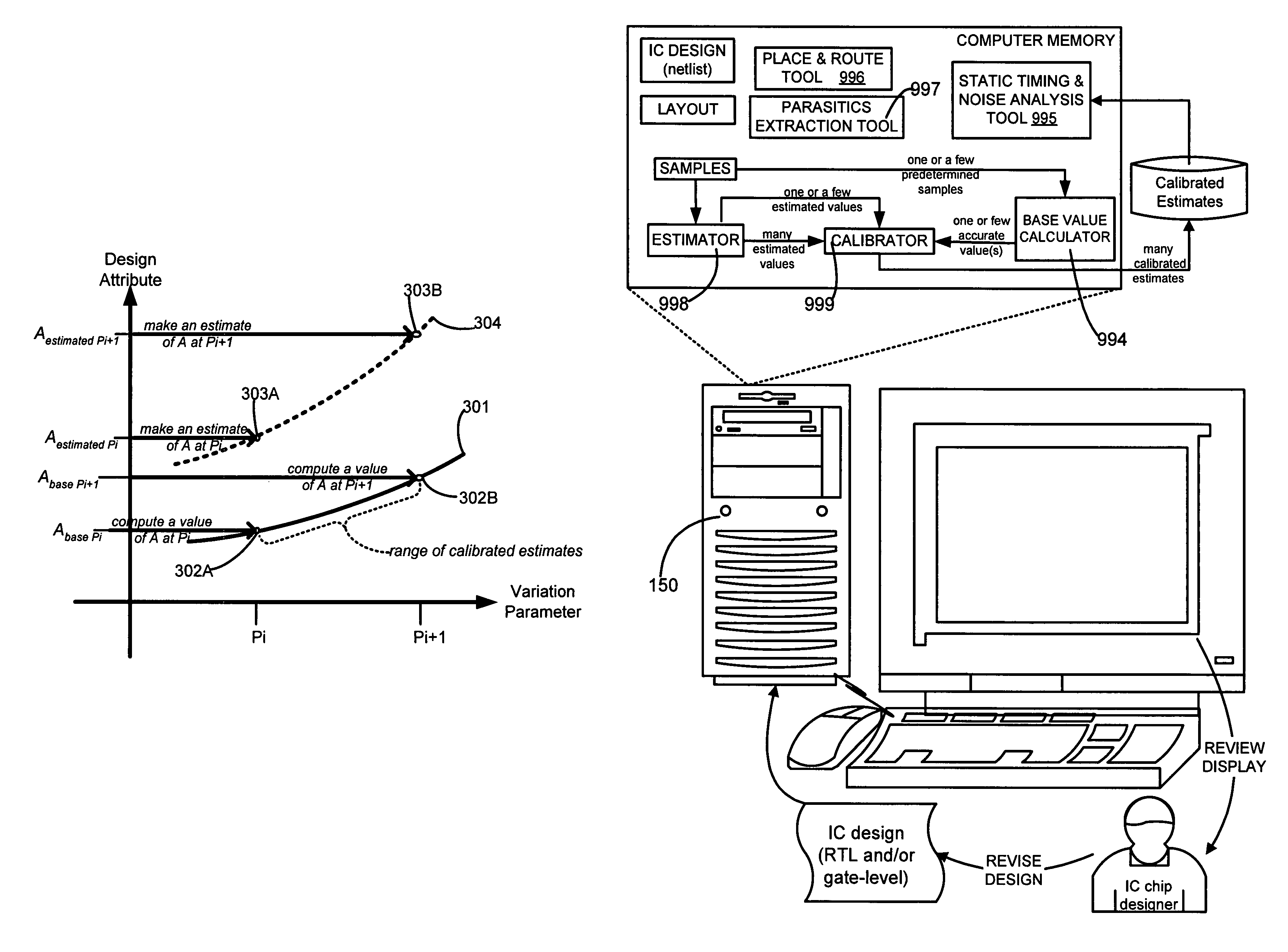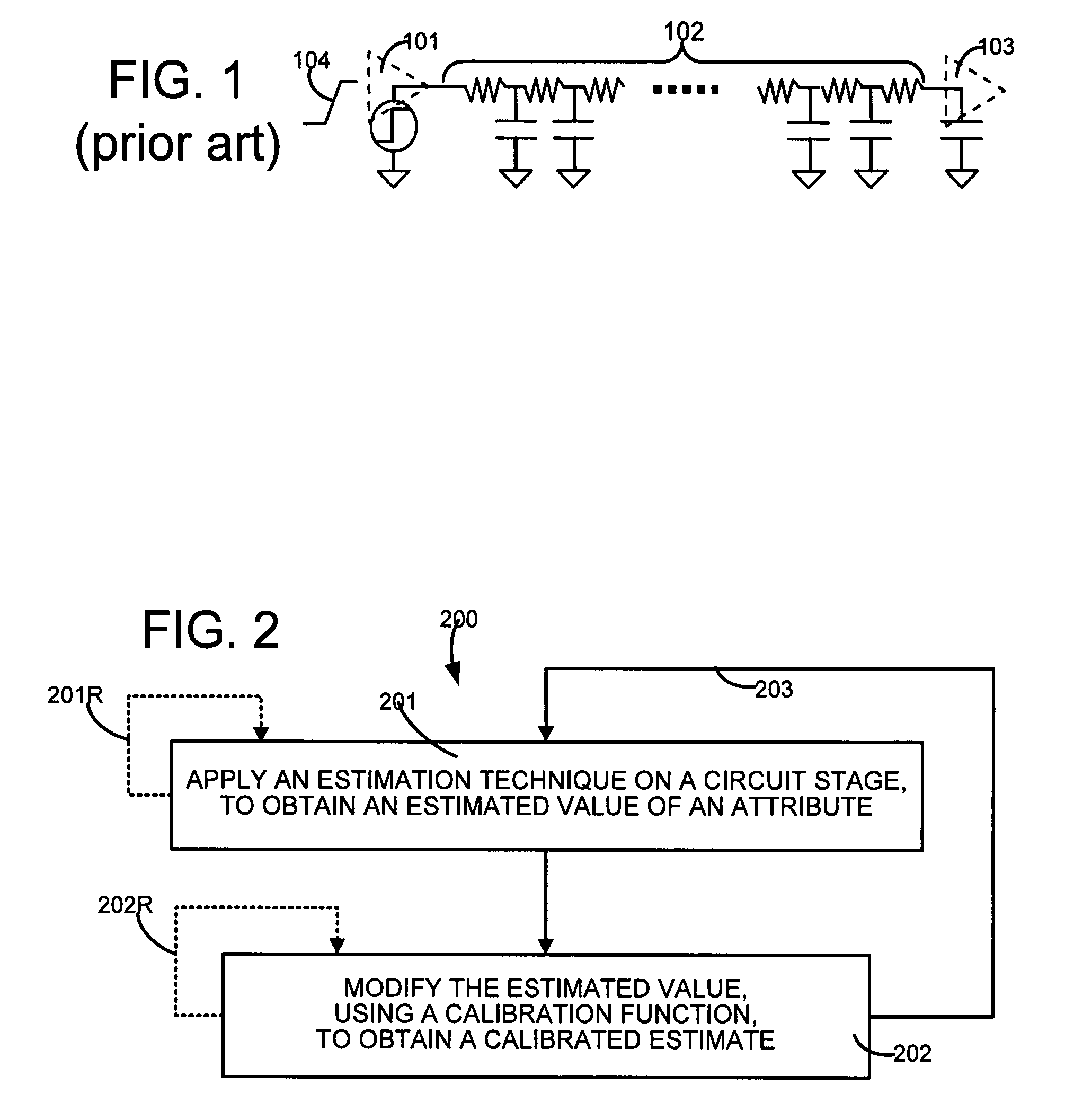Determining a design attribute by estimation and by calibration of estimated value
a technology of design attributes and estimation, applied in the direction of cad circuit design, program control, instruments, etc., can solve the problem of computationally more expensive estimation techniques and the calculation of base values, and achieve the effects of increasing computational speed, reducing memory usage, and increasing speed
- Summary
- Abstract
- Description
- Claims
- Application Information
AI Technical Summary
Benefits of technology
Problems solved by technology
Method used
Image
Examples
Embodiment Construction
[0029]A computer 150 (FIG. 7A) is programmed in several illustrative embodiments of the invention to automatically determine an attribute (which is design dependent) of a portion of an integrated circuit (e.g. a single stage illustrated in FIG. 1 or a series of stages illustrated in FIG. 10) by applying an estimation technique on the circuit portion (see act 201 in FIG. 2) to obtain an estimated value of the design attribute. The estimation technique is applied repeatedly (as shown by branch 201R) for different values of a variation parameter (such as interconnect resistance), to obtain a corresponding number N of estimated values of the design attribute (such as delay).
[0030]Computer 150 (FIG. 7A) is further programmed to modify each estimated value (as per act 202 and branch 202R in FIG. 2) by using a calibration function, to obtain a calibrated estimate for the attribute. Note that N calibrated estimates are obtained in this manner by computer 150 (FIG. 7A), one for each of the N...
PUM
 Login to View More
Login to View More Abstract
Description
Claims
Application Information
 Login to View More
Login to View More - R&D
- Intellectual Property
- Life Sciences
- Materials
- Tech Scout
- Unparalleled Data Quality
- Higher Quality Content
- 60% Fewer Hallucinations
Browse by: Latest US Patents, China's latest patents, Technical Efficacy Thesaurus, Application Domain, Technology Topic, Popular Technical Reports.
© 2025 PatSnap. All rights reserved.Legal|Privacy policy|Modern Slavery Act Transparency Statement|Sitemap|About US| Contact US: help@patsnap.com



